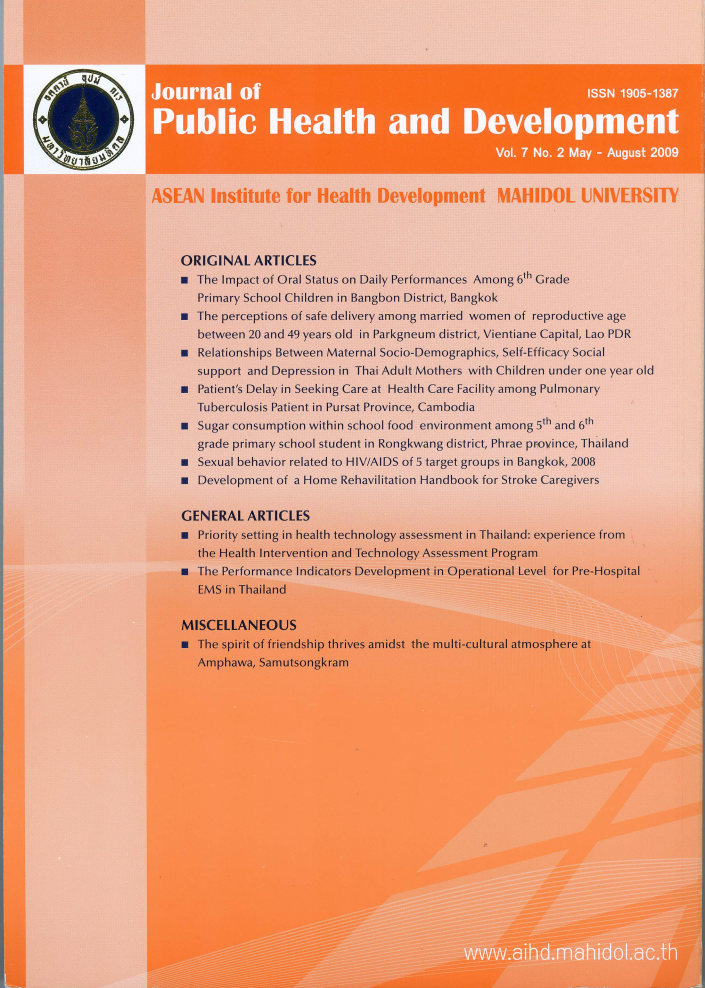Development of a Home Rehabilitation Handbook for Stroke Caregivers
Main Article Content
Abstract
Cerebrovascular disease leaves survivors with debilitating ADL limitations and dependency. Home rehabilitation is one means of recovery and improvement of self-care ability. Therefore, instruction about home rehabilitation is essential. The purpose of this research was to develop the Home Rehabilitation Handbook for Stroke Caregivers; and use the handbook as a guideline for providing rehabilitation services for caregivers of stroke patients. Based on a Research and Development design, this study was conducted from October of 2007 to October of 2008 at hospitals in Ratchaburi, Thailand. The research methods were as follows: Phase 1: collecting data on the home rehabilitation problems and needs of stroke patients and caregivers; Phase 2: developing the Home Rehabilitation Handbook for Stroke Caregivers based on the data from Phase 1 and Phase 3: handbook testing with 30 pairs of purposively selected stroke patients and caregivers. The effectiveness of thehandbook was evaluated by comparing the patients’ADL capacity before and after participating in the program. Data were analyzed by using descriptive statistics and simple pair t-test.
The analysis showed that the mean scores for the ADL capacity of the stroke patients before and after receiving home rehabilitation care with the Home Rehabilitation Handbook for Stroke thus indicating that patients’ ADL post-program mean scores were significantly higher their pre-program scores (p<0.05). Therefore, it can be concluded the Home Rehabilitation Handbook for Care Givers helped increase knowledge and skills for rehabilitation among stroke caregivers which further resulted in improved self-care ability. For these reasons, further use of the Home Rehabilitation Handbook for Caregiversis highly recommended.


